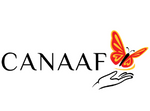1. Find a Team
Alopecia areata is an autoimmune skin disease that can affect various aspects of your life. This is why it is recommended that you have more than your Family Care Practitioner by your side. Individuals with Alopecia Areata also find benefit in:
Dermatologist
Often, your Doctor will refer you to a Dermatologist who will perform a clinical test, and sometimes blood work and biopsy to confirm the cause of your hair loss. Your dermatologist should be your primary contact for questions or changes related to your Alopecia Areata.
The Canadian Dermatology Association keeps a map of practicing dermatologists in Canada: https://dermatology.ca/public-patients/about-dermatology/find-a-dermatologist/
Social Worker or Therapist
Losing your hair can be a distressing change in your life. It is important to have someone to reach out to when you aren’t feeling your best.
Naturopathic or Holistic Coach
Perhaps you want to do something about your alopecia, but you don’t want to go the treatment route described by your dermatologist. There are other options you can explore to help your body find balance, such as alternative medicine, life coaching, and nutrition and exercise modifications.
2. Learn about the Alopecia Areata Journey
You may have never heard of alopecia areata before you or your child were diagnosed. So you likely have a lot of questions about what causes it, how to treat it, and what to expect moving forward. Education is an important step early on so you can feel empowered when making decisions and when talking with health professionals.
CANAAF’s Patient Journey Map will help you navigate this unpredictable disease from day one. This detailed document covers what to expect as someone newly diagnosed, options for managing the impacts of alopecia, and how to successfully navigate the road ahead.
You can also read the Understanding Alopecia Areata section under our main menu, including living with and treating alopecia, and our FAQs page.
We know there is a lot to take in after diagnosis. Give us a call at (905) 833-1619 or send us an email and we’ll help you go through it.
3. Join a Support Group/Connect with a Mentor
You may not know anyone else who has alopecia, and we’re here to help with that. There is a whole community of kind people who you can connect with through CANAAF.
Join a Support Group
Sometimes the best remedy is knowing you’re not alone. A support group is a positive, safe space where you can listen to others experiences, what they’ve tried, and talk with someone who understands. CANAAF has local support groups in major cities, as well as online events like our Family Success Session that are open to everyone across the country.
Talk with Someone
Can’t find a support group near you? We’ve got you covered. Our mentorship program was specifically designed for you to make a friend, no matter where you are located. Connect one-on-one with a CANAAF Mentor here.
4. Become a CANAAF Community Member
Sign up for the CANAAF Community to receive our newsletters and stay up to date on current news and events. We send out research updates, member stories, tips & tricks for your alopecia, awareness initiatives, and more. You can also choose to hear about our events such as our monthly support groups, educational webinars, and guest speakers.
You can also join the CANAAF Community private Facebook group to connect with other community members online, share information, stories, and product/service recommendations.
5. Find Additional Supports
CANAAF has resources to help you find alopecia products & services, access wigs and hair pieces, and educate those around you. Here are some options you can explore:
Shopping
For alopecia-friendly products and services such as wigs, eyebrow solutions, and head coverings, see the CANAAF Vendors list.
Purchasing a Wig
If you are thinking of buying a wig, our Wig Lending Library can help you decide what kind of wig works best for you. We have synthetic and human hair wigs of different brands, styles, and cap constructions that you can borrow for a period of four weeks.
CANAAF also has a financial assistance program, the Heads Up Fund, that can help cover the cost of a wig for those with alopecia areata aged 13 & over. For children 18 years and younger, WigsforKids.ca can provide a hair replacement system at no cost.
Clinical Trials
Often your dermatologist will guide you through your treatment options. Beyond that, you can participate in an alopecia areata clinical trial to have access to treatments that are not yet available to the general public. There are both benefits and risks to being involved in a clinical trial, which you should discuss with your doctor. See our clinical trials information to learn more and to locate a trial near you.
Options for Children
Kids & Teens Club
At CANAAF’s Kids & Teens Club, children with alopecia make friends with others their age in the community. This monthly meetup takes place over Zoom, and includes creative activities such as arts & crafts, games, and time to talk about alopecia.
CANAAF Classroom Package
Use our collection of resources to help you and your child bring alopecia into the classroom. Educating classmates, teachers, and friends about alopecia areata has shown to decrease incidences of bullying and the spread of misinformation, leading to a more successful and positive school environment for your child. Contact us if you’d like help from a CANAAF volunteer to create a presentation for your child’s school.
CANAAF Colouring Book
Order copies of CANAAF’s colouring story book, We’re Unique! for your child and their friends to enjoy together. It’s a creative activity that can increase awareness, educate and normalize alopecia for your child all at the same time!
Reading Materials
See our list of books for children, pre-teens, teenagers, and children whose parents have alopecia. When children see representations of alopecia in the media they consume, they build more confidence knowing they are not alone.
